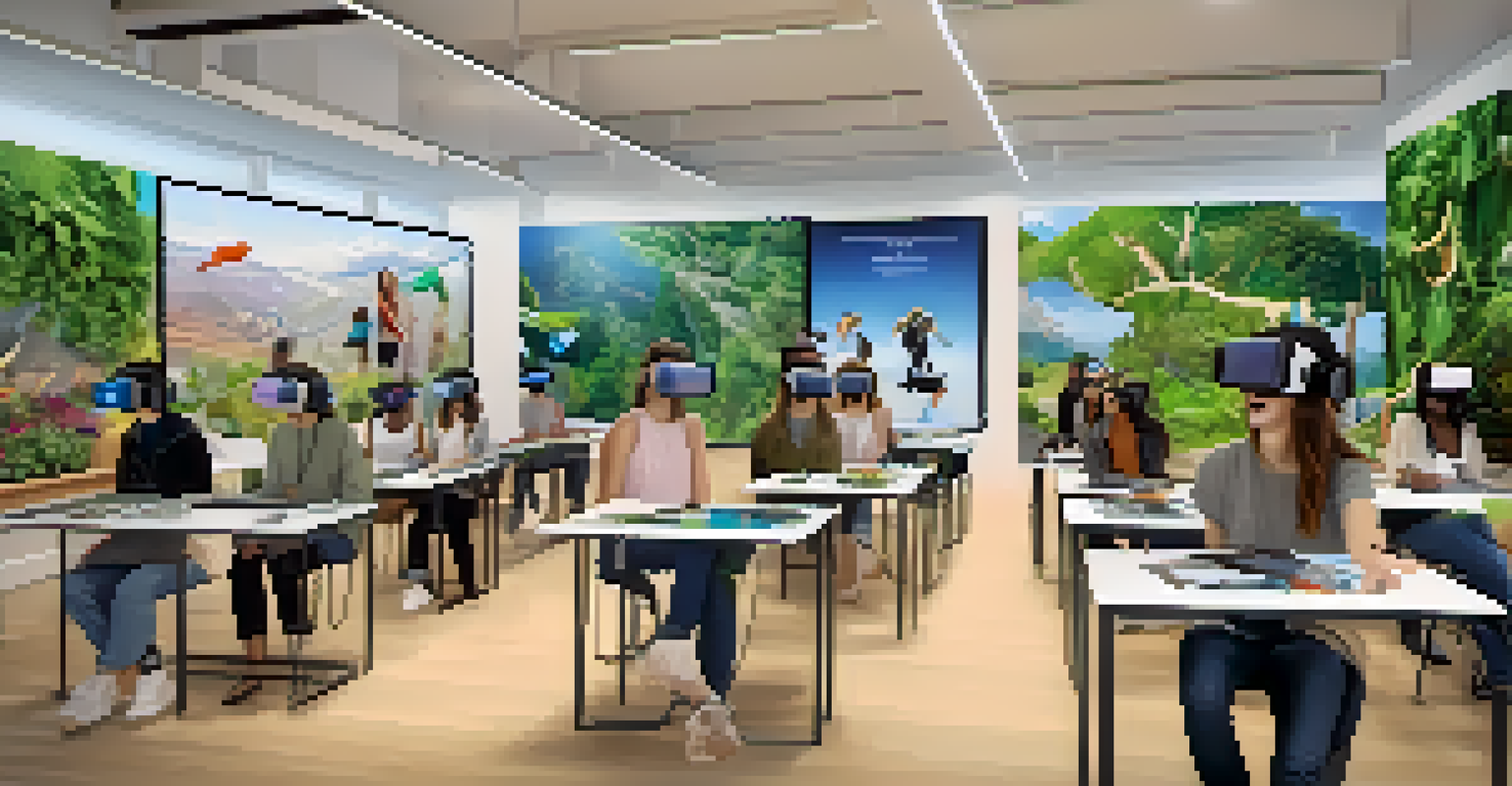Sustainable Fashion Education: Teaching Eco-Conscious Choices

Understanding Sustainable Fashion: A Primer for All
Sustainable fashion refers to clothing and accessories designed to minimize environmental impact. This includes using eco-friendly materials, ethical labor practices, and reducing waste throughout the production process. Understanding this concept is crucial for making informed fashion choices that benefit both our planet and society.
Fashion is the armor to survive the reality of everyday life.
Imagine if every garment you wore had a story behind it—one that reflects care for the environment and the people who made it. By grasping the fundamentals of sustainable fashion, we can shift our mindset from just wearing clothes to embracing a lifestyle that cherishes sustainability. This shift not only empowers consumers but also influences the fashion industry as a whole.
In a world where fast fashion dominates, sustainable fashion education encourages individuals to think critically about their choices. By learning about the lifecycle of clothing and its environmental impact, we can cultivate a more conscientious approach to fashion, paving the way for a healthier planet.
Why Sustainable Fashion Education Matters
Education plays a pivotal role in shaping perspectives about sustainable practices in fashion. By integrating sustainable fashion into educational curriculums, we equip students with the knowledge to make eco-conscious decisions. This understanding fosters a new generation of consumers who prioritize sustainability over fleeting trends.

Think of sustainable fashion education as planting seeds of awareness that will grow into a forest of change. When students learn about environmental impact, ethical sourcing, and the importance of reducing waste, they become advocates for sustainability. This advocacy can ripple through communities, encouraging others to follow suit.
Sustainable Fashion Empowers Consumers
Understanding sustainable fashion enables consumers to make informed choices that positively impact the environment and society.
Furthermore, as consumers become more informed, they demand greater transparency from brands. This creates a marketplace where sustainability isn't just a buzzword but a fundamental expectation, pushing the fashion industry toward more responsible practices.
Incorporating Sustainable Fashion into School Curriculums
Integrating sustainable fashion concepts into school curriculums can be both engaging and educational. Subjects like art, science, and social studies can encompass lessons on eco-friendly materials, sustainable design, and the social implications of fashion. This cross-disciplinary approach not only makes learning fun but also relevant to students' everyday lives.
Sustainability isn't a trend; it's a lifestyle change.
Consider a project where students design their own clothing line using recycled materials. This hands-on experience not only teaches creativity but also emphasizes resourcefulness and sustainability. By connecting fashion to real-world applications, students can see the impact of their choices first-hand.
Moreover, such programs can involve collaborations with local businesses and organizations focused on sustainability, creating a community around eco-conscious fashion education. These partnerships can provide students with insights into the industry while fostering a sense of responsibility toward the planet.
Promoting Critical Thinking in Fashion Choices
Sustainable fashion education encourages critical thinking about consumer habits. By examining the implications of fast fashion versus sustainable alternatives, students learn to question their purchasing decisions. This analytical approach fosters a deeper understanding of the consequences of their choices, both environmentally and socially.
For instance, when students investigate the lifecycle of a cotton t-shirt—from farming to disposal—they can appreciate the resources involved and the waste generated. By highlighting these connections, they become more mindful consumers, weighing the pros and cons of each purchase.
Education Fosters Eco-Consciousness
Integrating sustainable fashion into school curriculums cultivates a new generation of consumers who prioritize ethical practices over trends.
Encouraging discussions around these topics can also lead to a broader conversation about consumerism and its impact on society. By empowering students to think critically, we pave the way for more responsible fashion choices that can ultimately reshape industry standards.
The Role of Technology in Sustainable Fashion Education
Technology plays a vital role in enhancing sustainable fashion education. Online platforms and apps can provide resources, courses, and interactive learning experiences that make sustainability accessible to everyone. By leveraging technology, educators can reach a wider audience and engage students in innovative ways.
For instance, virtual reality can immerse students in sustainable fashion scenarios, allowing them to explore the impact of their choices in a simulated environment. This engaging approach can spark curiosity and inspire students to take action in their own lives.
Additionally, technology can facilitate collaboration between students and industry professionals, fostering mentorship and knowledge exchange. By connecting learners with experts, we can create a network of support that encourages sustainable practices in fashion.
Community Engagement in Sustainable Fashion Initiatives
Community engagement is essential for promoting sustainable fashion education beyond the classroom. Local workshops, fashion shows, and awareness campaigns can bring the message of sustainability to a broader audience. By involving the community, we create a collective movement toward more eco-conscious fashion choices.
Imagine organizing a clothing swap event where community members exchange garments instead of buying new ones. This not only reduces waste but also builds connections among participants, fostering a sense of community and shared values. Such initiatives can inspire individuals to rethink their fashion consumption and encourage sustainable practices.
Community Drives Sustainable Initiatives
Engaging local communities through workshops and events amplifies the message of sustainability, inspiring collective action toward eco-friendly fashion choices.
Moreover, partnering with local organizations can amplify the impact of these initiatives. By collaborating with like-minded groups, we can pool resources and knowledge, creating a stronger foundation for sustainable fashion education in our communities.
Future Trends in Sustainable Fashion Education
As the conversation around sustainability evolves, so too will sustainable fashion education. Emerging trends such as circular fashion, which focuses on designing products with their end-of-life in mind, will likely become integral components of educational curriculums. This shift encourages students to think holistically about the fashion lifecycle.
Additionally, the rise of digital platforms will continue to shape how we educate individuals about sustainable fashion. Online courses and social media awareness campaigns will empower more people to engage with eco-conscious practices, regardless of their geographical location.

Ultimately, the future of sustainable fashion education lies in its adaptability and inclusivity. By embracing new ideas, technologies, and community initiatives, we can continue to foster a culture of sustainability that resonates with everyone, ensuring a brighter future for our planet.